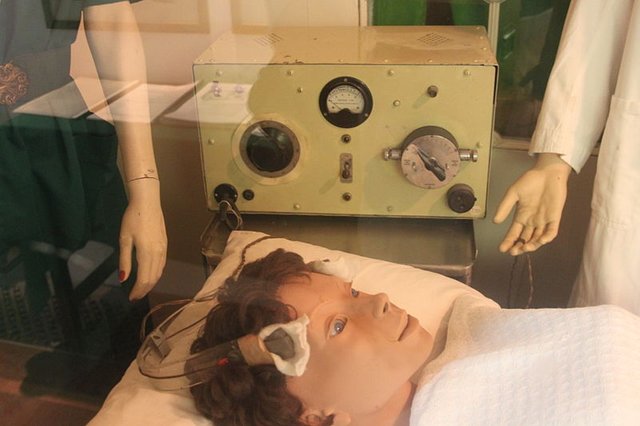Before starting today's article, I want to explain the reason for my absence, a flaw in my personality that was hard to admit; I'm pretty lazy. I require incentives to do many things, including writing, and although the feedback and comments in my posts were a good positive stimulus, the economic gains were a stronger motivation, and having a decent amount of STEEM and SBD's saved up, I just did not feel the need to publish regularly.
However, during this time (in which I admit I have not been very busy) I felt the need to return and share my articles, not for the money (especially now, seeing the price of cryptocurrencies), but for the satisfaction that I feel sharing knowledge with an audience, entertaining them, reading their comments, and studying and researching for my articles; I also learn with you. And frankly, I'm bored, and with a lot of free time. Even with the fall of cryptos (maybe, because of that), I feel the need to go back to my blog, and to bring you the most interesting articles about medical curiosities. With nothing more to say, I present to you my new article, I hope the first of many this month, and I hope you enjoy it!
In my previous articles of my Rare Diseases series, I have written mainly about deformities and genetic defects, one of my favorite topics. However, the body is not the only thing that can go through pathological processes that seem taken out of the imagination of H. R. Giger (feel free to look at his work), the mind is also capable of suffering innumerable disorders. Mental illnesses go far beyond hearing voices, lack of empathy, behavior problems, or believing that she loved you (she never did, sorry to be the one to break it to you). Today I bring to you a condition that can serve as inspiration for when you cannot think of a disguise for that Halloween party: the so-called "Walking Dead Syndrome" or Cotard’s Syndrome.
Rare Diseases: Cotard Syndrome

The desire to die is present in many dramatic teenagers going through the hardships of high school, and in every medical student after a couple of years. Fortunately, most of us overcome those difficult moments and continue with a normal life full of
Cotard’s syndrome, also called Cotard's delusion or delusion of denial, is a mental disorder similar to hypochondria (in which people believe they are sick), with the great difference that patients who suffer from it are convinced that they are no longer alive, that they do not exist, and even that they are decomposing (poor body hygiene can help with the latter). It was first described in 1882 by the French neurologist Jules Cotard, who highlighted the case of a woman with the belief that several parts of her body did not exist and that she was condemned to eternal damnation without the possibility of dying, and therefore, she did not need to eat. In a turn of events that no one would have possibly expected, the subject, nicknamed Mademoiselle X, died of hunger, demonstrating that where there is a will, there is not always a way.
Another interesting case is the Swedish musician Per "Dead" Ohlin, vocalist of the black metal band Mayhem between the late 80's and early 90's, who suffered internal bleeding from a ruptured spleen after receiving a beating at school, he was taken to the hospital, where he was clinically dead for a few minutes. After this incident, he acquired the belief that he was dead, and began to suffer from depression and to have harmful behaviors such as not eating for days, or cutting himself, sometimes during shows. Everything culminated with his suicide in 1991.

He was also one of the first black metal front men to wear corpse paint on stage. See? You can also learn about music from a medicine blog.
As with all mental illness, the causes of Cotard’s syndrome are diverse and sometimes unclear. Cases have been reported in patients with lesions in the frontal lobe of the brain, whether due to trauma or ischemia, but it can also be caused by damage to the parietal lobe or any of the two hemispheres. In addition, it can occur in people with a history of psychosis, depression, migraines or brain tumors, and in those who use drugs such as acyclovir (an antiviral) and its precursors, especially in patients with renal failure.
Among its symptoms, the patient usually denies his own existence, that of parts of his body, or claims to dead and in a state of putrefaction, sometimes even perceiving the smell of rotthing flesh (product of olfactory hallucinations, or poor hygiene, depending on the person). Affected patients have a distorted view of the world similar to those suffering from schizophrenia, and due to their delirium often stop bathing, socializing, eating, and may even cut themselves (ending the monopoly on self-inflicted wounds of emo teens in search of attention). Paradoxically, they also regularly believe that they are invulnerable, since they cannot die again, being already supposedly dead. In the most severe cases, the depression that usually accompanies this syndrome can lead patients to suicide.
Its diagnosis is based on clinical interpretation of its symptoms, according to the DSM-5 (Diagnostic and Statistical Manual of Mental Disorders, 5th Edition, the bible of psychiatrists, basically), and its treatment consists of antidepressant drugs such as escitalopram, antipsychotics such as olanzapine, and anxiolytics such as lorazepam. Treatment with electroconvulsive therapy has also proven to be effective, because electrocuting the brain of the mentally ill is always the best solution.

Yeah, that’s medicine for ya.
It is worth noting that this type of disorder can be as frustrating for friends and family as it is for the patient, since it is practically impossible to convince the patient that he is mentally ill. However, I want to embrace this opportunity and contribute my grain of sand in the fight for mental health: if you are reading this, you are not dead. Probably.
References:
- A Case Report of Cotard’s Syndrome
- Cotard’s syndrome: Two case reports and a brief review of literature
- Yarnada, K., et al. "A Case Study of Cotard's syndrome: Stages and Diagnosis". Acta Psychiatrica Scandinavica, 2007
- A Neuropsychiatric Analysis of the Cotard Delusion
- Per “Dead” Ohlin
This post has been voted on by the SteemSTEM curation team and voting trail in collaboration with @utopian-io and @curie.
If you appreciate the work we are doing then consider voting all three projects for witness by selecting stem.witness, utopian-io and curie!
For additional information please join us on the SteemSTEM discord and to get to know the rest of the community!
Downvoting a post can decrease pending rewards and make it less visible. Common reasons:
Submit
Good thing you came back, I also came back to stay
Downvoting a post can decrease pending rewards and make it less visible. Common reasons:
Submit
Congratulations! This post has been upvoted from the communal account, @minnowsupport, by mike961 from the Minnow Support Project. It's a witness project run by aggroed, ausbitbank, teamsteem, someguy123, neoxian, followbtcnews, and netuoso. The goal is to help Steemit grow by supporting Minnows. Please find us at the Peace, Abundance, and Liberty Network (PALnet) Discord Channel. It's a completely public and open space to all members of the Steemit community who voluntarily choose to be there.
If you would like to delegate to the Minnow Support Project you can do so by clicking on the following links: 50SP, 100SP, 250SP, 500SP, 1000SP, 5000SP.
Be sure to leave at least 50SP undelegated on your account.
Downvoting a post can decrease pending rewards and make it less visible. Common reasons:
Submit
Merry Christmas, enjoy the vote!
Downvoting a post can decrease pending rewards and make it less visible. Common reasons:
Submit
Congratulations @mike961! You have completed the following achievement on the Steem blockchain and have been rewarded with new badge(s) :
Click here to view your Board of Honor
If you no longer want to receive notifications, reply to this comment with the word
STOPTo support your work, I also upvoted your post!
Downvoting a post can decrease pending rewards and make it less visible. Common reasons:
Submit
excelente post bro.. Un saludo
Downvoting a post can decrease pending rewards and make it less visible. Common reasons:
Submit
Hi @mike961!
Your post was upvoted by Utopian.io in cooperation with @steemstem - supporting knowledge, innovation and technological advancement on the Steem Blockchain.
Contribute to Open Source with utopian.io
Learn how to contribute on our website and join the new open source economy.
Want to chat? Join the Utopian Community on Discord https://discord.gg/h52nFrV
Downvoting a post can decrease pending rewards and make it less visible. Common reasons:
Submit
What matters is always to come back! :)
This is a really good attitude and we always need more people like you in SteemSTEM! Similarly, I am happy to lear from you about things I don't even imagine they exist (like the Cotard's syndrome).
Once again, I am glad you came back!
Downvoting a post can decrease pending rewards and make it less visible. Common reasons:
Submit
Thanks! I'm glad you found it interesting and educative, I have to admit I really missed the feeling of receiving this kind of feedback.
Already have some more articles in progress, I hope to stay for good this time!
Downvoting a post can decrease pending rewards and make it less visible. Common reasons:
Submit
I felt like this kind of disorder is awfully similar to Obsessive Compulsive Disorder (OCD).
Downvoting a post can decrease pending rewards and make it less visible. Common reasons:
Submit
It has some similarities, though it is more related to other somatic delusions; mental disorders that involve changes in the perception of bodily functions or sensations.
Downvoting a post can decrease pending rewards and make it less visible. Common reasons:
Submit